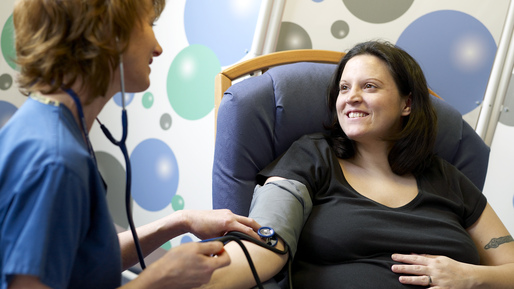Amy Barrett - Day in the life as a children’s nurse on placement

Over the three years, you will do a combination of both day shifts and night shifts on a range of different placements. In total you will need to complete 2,300 placement hours ⏱
A typical shift
A day shift usually starts at 7.30am and finishes at 8pm and is busier than the night shift, but sometimes it may be the other way round.
You will start the day with handover - this is where the night staff update the day staff about each patient. You will then have observations such as oxygen saturations, blood pressure and temperature to do throughout the day (morning, lunchtime, evening). You may have medication to give too. Writing in patients' notes will happen at regular intervals during the day too, preferably when it is quiet. If you are on a ward, you will have 'ward round' in the morning and afternoon (around 10am and 4pm) - this is for the doctors to see each patient and update care plans if necessary. During the day, there may be other professionals you work with (for example surgical team, or clinical nurse specialists). On your day shift, you will typically have an hour break which you can either use at lunch or split over the course of the day.
A night shift, although a similar routine, may seem quieter and less intense. This is because other professionals may not work during the night. There is a YouTube link connected to this blog that gives an overview of my first night shift.
Some similarities between the day and night shifts include doing observations (these may be less frequent depending on the patient), having handover at the beginning of the shift, giving medication which may be due, documenting in patients' records and seeing the doctor if needed. Differences may include having a longer break (up to two hours), depending on how busy the ward or area is. You may be asked to go to other wards to collect stuff or help out with the nightly checks that may take place such as the resuscitation trolley.
After your first night shift, you may feel more tired than usual - I found this was the case for me as I was not used to the change! But after doing a few more you will be able to manage sleeping patterns, and how you can manage your night shifts best.
Responsibilities
My main responsibilities on night shift include observations- you may have to cover for other staff while they are on their break! At the beginning of the night shift, I also help put parents' beds down as these are put away during the day. You may be given your own patients, so need to ensure you know what you are doing for each one. For example, checking the time that medications are due (this is important so you know when to get a nurse as you will need them to sign for them), when observations are as well as any other tasks that may need doing such as ng feeds.
Top tips
My advice for managing night shifts:
- try to stay up as late as possible the night before so you are able to sleep during the day
- if you find it hard sleeping through the day, think of getting things such as eye mask or ear plugs - I found it so hard to go to sleep in broad daylight!
- you may feel you will be able to power through a night shift but sometimes this is not the case - try and nap on your break if you can whilst on placement- I found I needed this the most when I was doing multiple night shifts in a row
- if you do start to feel tired whilst on shift, try to keep yourself busy even just walking around the ward/department.
I hope this brief overview gives you an idea of what a day on placement might include, for both day and night shifts. If you have any more questions, regarding the University or children’s nursing I will be happy to help 😀